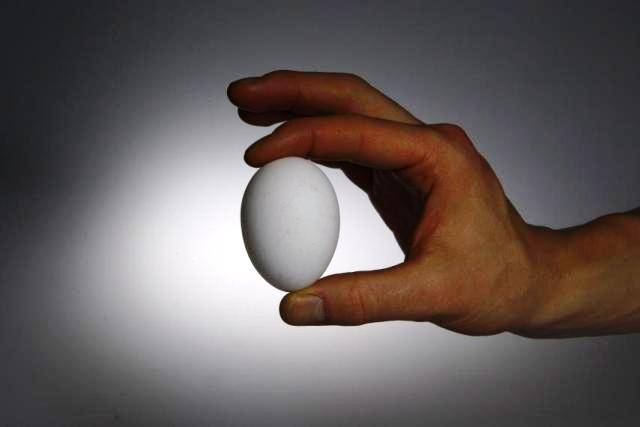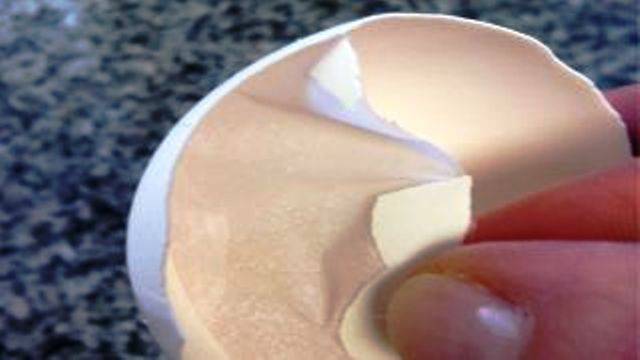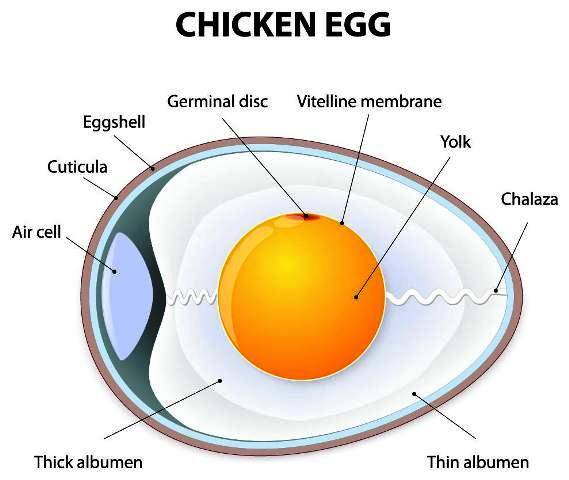
Egg is one of the best source of protein. Its digestibility makes it ideally suitable for people of all ages. Egg has found increasing acceptability in the vegetarian diet, because the farm egg is infertile, and so the age-old taboo is fast on the decline, especially in the urban areas. Consequently, the demand for eggs in towns and cities is increasing rapidly.
The hen's egg is a specialized structure wherein the development of the embryo takes place outside the body of the hen. Nature has made provision for sufficient food material in the egg itself to meet the nutritional requirements of the growing embryo. The egg thus protects and provides a complete diet for the developing embryo and supplies nutritious food for the hatched chicks for the first few days of their life.
Structure of Egg
A fully formed egg has the shell, two membranes, albumen or white portion of the egg, yolk or the yellow portion of the egg and germinal disc.
1. Shell
The shell is the outer most part of the egg. It, along with two other membranes, forms a protective covering for the inner contents of the egg. Any damage to the shell will result in a loss of quality of the edible portion.

The shell is a source of calcium to the developing embryo during incubation. The pores of the shell and the membrane allow gaseous exchange. This helps the developing embryo in its respiration.
The shell is porous and largely made up of calcium carbonate. It is very brittle and breaks easily. The shell and its membranes make about 11 % of the total weight of the egg.
2. Shell Membranes

Next to the shell are two membranes: the outer one and the inner one. The inner and outer shell membranes each' consists of two or three layer of a more or less unorganized, interwoven network of protein fibres. These membranes are no doubt very thin but are still quite tough and strong. They along with the shell, give good protection with inner contents of the egg. These are flexible when moist but brittle when dry. Both the membranes are porous and composed of fibres.
3. Air Cell
There is no air-cell in an egg al the moment it is laid. The contents completely fill the shell. In the hen's body, the egg is at a temperature which is near about 41o C. After being laid, it is exposed to a lower temperature. The moist coating of the cuticle on the eggshell dries up due to evaporation, as soon as the egg comes in contact with outside air. Both, the evaporation and the exposure to a lower temperature produce a cooling effect in the egg. This results in the contraction of its contents. The yolk and the albumen contract more than the shell.

Normally the air cell is located at the broad end of the egg, where the beak of the embryo points during the last stage of incubation when it needs air for breathing.
4. Albumen
Next to the membranes, is a clear, translucent colourless viscous mass with a yellowish tint This is albumen or the white of the egg. It is so-called because it has a milky white colour on coagulation.
In a normal fresh egg, the albumen consists of two distinct parts, a thick vicious portion (dense white) and a thinner portion (liquid white). The former is jelly-like consistency, and the batter is watery.
The albumen makes up about 58% of the total weight of the egg. Of this, about 34% is the dense portion and the remaining thin white.
5. Yolk
The yolk or the yellow of the egg is a mass of yellow coloured material enclosed in the albumen. It is an important part of the egg. It contains highly nutritious material required for the nourishment of the young during its embryonic growth and for sometimes after hatching.
The yolk carries the germinal disc, which under suitable conditions, develops into a chick. It consists of a thick viscous fluid enclosed in a thin delicate semi-permeable elastic membrane called the 'vitelline' or 'yolk membrane'.
The yolk fluid looks to be in uniform colour throughout but consists of concentric layers of dark and light material. In a newly laid egg, the yolk is near the centre of the egg surrounded by the albumen all around. The yolk makes up about one-third of the weight of the egg.
The colour of the yolk in a fresh egg varies from pale yellow to deep orange which is mainly due to the availability of carotenoid pigments in the feed.
So, What do you think Is Egg Vegetarian or? Find out here. Non-Vegetarian















